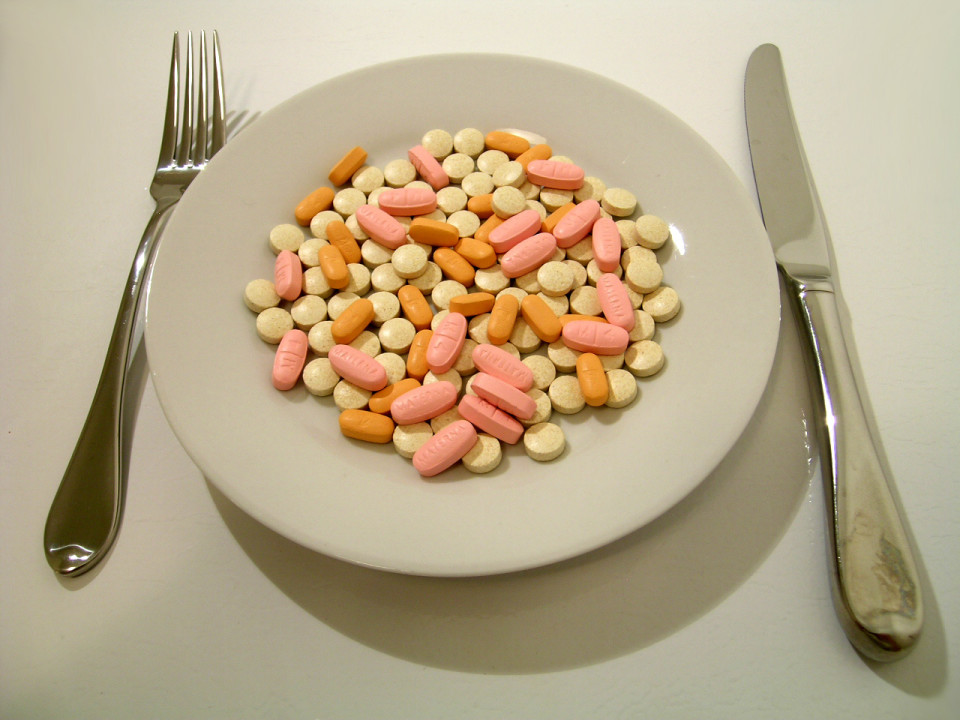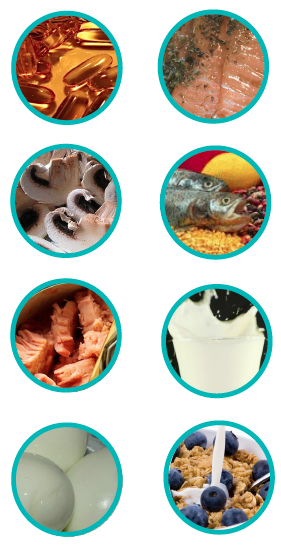
Vitamin D is like the most popular girl in the class of supplemental vitamins right now. It seems like everyone is taking it.
You know what’s crazy though? Vitamin D isn’t even a real vitamin. Because the body can produce its own vitamin D, it’s not an essential part of the diet and is considered a pro-hormone.
You may have heard that exposing bare skin to the sun for 10-20 minutes 2-3 times per week allows the body the ability to produce sufficient vitamin D. Despite this, recent studies have suggested that up to 50% of adults and children worldwide are vitamin D deficient.

Me too.
And guess what? I am in that 50%! I got my vitamin D level tested for the first time and it was 29. Normal levels are considered 30-100 nmol/L, but the sweet spot is around 70. I never would have guessed that I was deficient– I live in Florida and I eat pretty darn healthy!
Why is low vitamin D a concern? Adequate vitamin D ensures the regulation of calcium and phosphorus absorption, maintenance of healthy bones and teeth, and has been shown to have a protective effect against the flu, some types of cancer, type I diabetes and multiple sclerosis. Vitamin D deficiency has been linked to depression, decreased immunity and dementia.
I know I feel my best when I’m outdoors in the sunshine. When I lived in Ohio, I would get depressed in the winter months when it was too cold to spend much time outside and the sun set early. My body needs that sun exposure to run more efficiently and it sends me cues to make sure that happens.
Sure, I could just pop a Vitamin D supplement, but it’s best to get any vitamin or mineral through natural (i.e. food, sunshine) sources first. It is not the individual vitamin, mineral or pro-hormone alone that make certain foods beneficial to our health, but the synergy of those foods’ nutrients working together and allowing for greater absorption.
It has been proven time and again that isolating certain nutrients in supplement form will not provide the same health benefits as consuming the nutrient from a whole food. For example, you’re not going to get the same benefits from a vitamin C pill as you will from eating orange. First focus on obtaining your daily vitamin D requirement from sunlight and foods then use supplements as an insurance policy.
I made it my initial goal to get 10 minutes of sun exposure daily. I thought that since I live in Florida that I get plenty of sun, but after setting this goal I realized there are a lot of days the only outdoor activity I’m doing is going to and from the car. I used the Way of Life app to track how many days per week I hit my goal. Despite doing this for 6 months, I retested (in January) and my vitamin D was 27. It went down!
What finally got my vitamin D in normal range
Getting a dog. Seriously. Since I’ve had my dog, my vitamin D is always above 30. We walk outside or go to the park every day, so I’m forced to get at least an hour of sunshine.
I can increase it a little more with taking a vitamin D supplement, but I’ve never been able to get it above 40.
So if it’s just not possible for you to get outside that often or you live somewhere where there isn’t much sunlight in the winter months, taking a supplement might be a good idea. I recommend Thorne’s Vitamin D-1,000.
One thing to keep in mind about taking vitamin D supplements is that too much of a good thing is NOT a good thing. Vitamin D levels that are too high tend to have the same adverse health effects as levels that are too low. Popping a super high vitamin D for years on end without retesting your labs is not smart.
Recommended Intake
Vitamin D intake can be measured in two ways: in micrograms (mcg) and in International Units (IU). 1 microgram of vitamin D is equal to 40 IU of vitamin D.
0-50 years: 5 micrograms or 200 IU per day
51-70 years: 10 micrograms or 400 IU per day
71+ years: 600 IU per day
| Food Sources of Vitamin D | Serving Size | Approx. IU/Serving |
| Cod liver oil | 1 T | 1,360 |
| Herring, fresh, raw | 4 oz | 1,056 |
| Swordfish, cooked | 4 oz | 941 |
| Raw maitake mushrooms | 1 cup | 786 |
| Salmon, sockeye, cooked | 4 oz | 596 |
| Sardines, canned | 4 oz | 336 |
| Fortified skim milk | 1 cup | 120 |
| Tuna, canned in water, drained | 3 oz | 68 |
| Egg, chicken, whole, large | 1 | 44 |
In the United States, many foods are fortified with vitamin D manufactured by UV irradiation of ergosterol produced by yeast. Common foods fortified with vitamin D include orange juices, yogurt, margarine and breakfast cereals.
The richest and most natural food sources of vitamin D are fish oil and fatty fish. If you’re looking for a good brand of cod liver oil, I recommend this one.
There are usually no blatant outward symptoms of vitamin D deficiency, although you may experience fatigue, muscle pain, depression, or weakness. If you live in an area that experiences several months without sufficient sunshine, have dark skin, are obese or don’t regularly consume foods high in vitamin D, you are considered at risk for deficiency. Even if you don’t have any of those risk factors, it’s a good idea to have your health care provider test your vitamin D levels at your next appointment or screening.
Disclosure: We were not paid to write any of the reviews or recommendations above. This post may contain one or more affiliate links. All opinions are our own.
